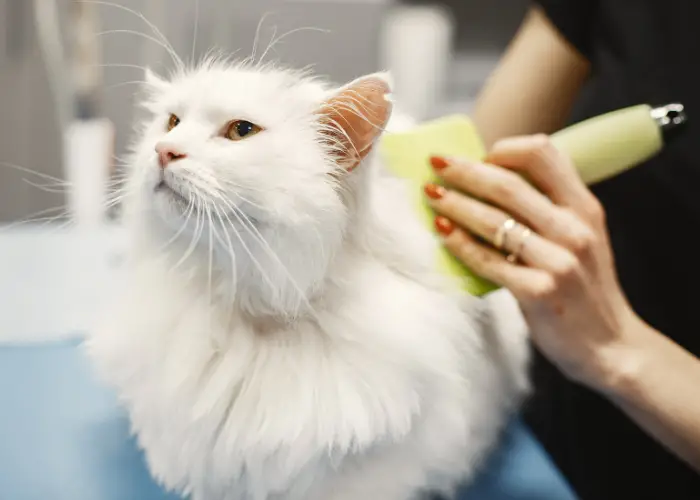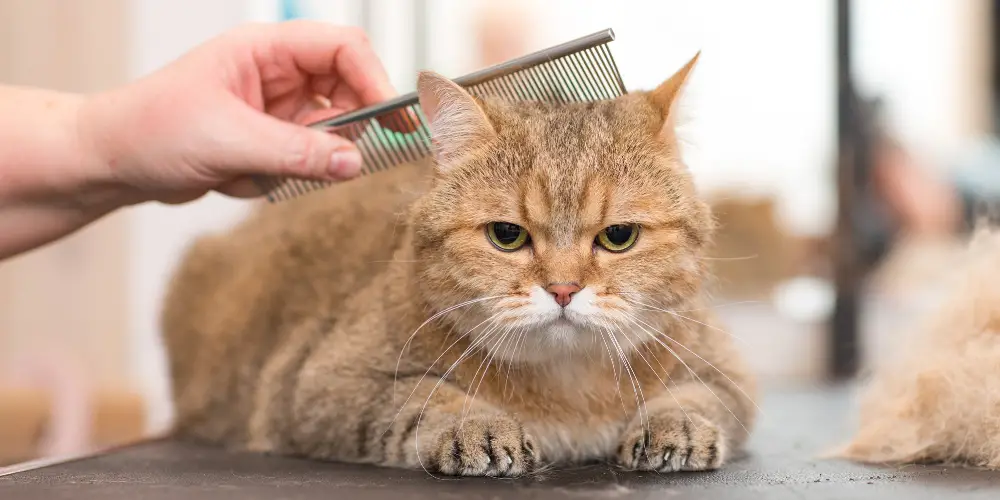Welcome to the ultimate cat care guide! If you’re pondering the thought, “Are cats low maintenance?” you’re in for some enlightening insights.
Cats are generally considered low-maintenance pets due to their independent nature. They can entertain themselves, use a litter box, and require minimal grooming. However, they still need attention, playtime, and regular feeding.
But, is there more to the story?
Let’s dive into the world of feline care and uncover the layers of responsibility that come with being a cat parent.
Understanding Cat Maintenance: Myths vs. Facts

Choosing the Right Cat Breed for Your Lifestyle.

When venturing into cat ownership, the sheer variety of cat breeds, each with its characteristics, can be overwhelming.
The choice of breed impacts not just your lifestyle, but the cat’s well-being. It’s crucial to match your living situation, activity level, and care capacity with the needs of your potential feline companion.
Understanding Breed Characteristics
Every cat breed has a unique personality, activity level, and grooming needs.
For instance, Siamese cats are known for their vocal nature and high energy, often requiring more interactive playtime. On the other hand, the British Shorthair is more laid-back, making a good fit for a quieter household.
Grooming Requirements
The grooming needs of a cat can vary significantly from one breed to another.
Long-haired breeds like the Persian require daily brushing to prevent matting and reduce hairballs, whereas short-haired breeds like the American Shorthair have more minimal grooming needs.
Health Considerations
Some breeds are predisposed to specific genetic health issues. For example, Maine Coons are prone to hypertrophic cardiomyopathy, a heart condition.
Prospective owners should research breed-specific health concerns and consider the long-term commitment to potentially necessary veterinary care.
Activity Level and Space Requirements
Consider the space you can provide and the cat’s activity level. Active breeds like the Abyssinian thrive in environments where they can explore and play, whereas less active breeds may be more suited to apartment living.
Compatibility with Children and Other Pets
Some breeds have temperaments better suited for households with children and other pets.
The Ragdoll is known for its gentle disposition, making it a great family pet. Conversely, some cats prefer being the only pet and may not adapt well to sharing their environment.
Allergy Considerations
For those with allergies, certain breeds, like the Siberian or the Sphynx, are known for being more hypoallergenic due to their fur type or grooming habits, potentially making them a better fit for sensitive households.
Choosing the right cat breed involves more than falling in love with a look or personality trait; it’s about ensuring a harmonious match between the cat’s needs and your ability to meet them.
Take the time to research and, if possible, spend time with the breed you’re considering to ensure it’s a good fit for your lifestyle and home environment.
Daily Cat Care Essentials

Nutrition and Feeding
Feeding your cat isn’t just about filling a bowl with kibble and calling it a day. Cats are obligate carnivores, requiring a diet rich in proteins and specific nutrients to thrive. Whether you opt for wet, dry, or a mix of both, understanding your cat’s nutritional needs is key.
Adapting their diet to their age, health status, and lifestyle is essential to keep them healthy. Remember, water is just as crucial as food, so keep a fresh supply available.
Grooming and Hygiene
Cats are known for their meticulous grooming habits, but that doesn’t mean they don’t need a helping hand.
Regular brushing helps minimize hairballs and keeps their coat shiny, especially for long-haired breeds. And while most cats naturally take to the litter box, keeping it clean is your job.
A clean, accessible litter box will prevent many common issues, from accidents around the house to more serious health conditions.
Health and Wellness
Preventive care goes a long way in ensuring your cat’s longevity and quality of life.
Annual vet visits for vaccinations and check-ups, parasite control, and dental care are all part of the package. Be observant of changes in your cat’s behavior or appearance, as these can be early signs of health issues.
Behavioral and Emotional Well-being

Environmental Enrichment
Cats need stimulation and engagement just as much as any pet. Scratching posts, window perches, and interactive toys can provide hours of entertainment and exercise. Remember, a bored cat can become a destructive cat, so keep their environment interesting and engaging.
Training and Socialization
Yes, cats can be trained! Basic commands, litter box training, and proper scratching behavior can all be taught with patience and consistency. Socialization is crucial to ensure your cat feels confident and secure, especially in multi-pet households.
Maintenance Schedule
Monthly Cat Care Calendar
- Week 1: Check and refill prescription medications or flea control. Inspect toys and replace if worn out.
- Week 2: Grooming session for long-haired breeds. Brush short-haired cats to reduce shedding.
- Week 3: Clean and disinfect the litter box thoroughly.
- Week 4: Weigh your cat and monitor for any significant weight changes.
Daily Reminders
- Fresh water and food twice a day.
- Litter box scooping.
- Playtime and interaction.
The Joys and Challenges of Cat Ownership

The Rewards of Cat Companionship
The bond between a cat and its owner is unique and rewarding. Cats offer comfort, companionship, and even health benefits, reducing stress and providing a sense of calm to their human friends.
Addressing Potential Challenges
From managing their scratching habits to dealing with litter box issues, cat ownership comes with challenges. Understanding and patience are key to creating a harmonious living situation for you and your feline friend.
Advanced Cat Care Topics
Caring for Special Needs Cats
Whether it’s a rambunctious kitten, a dignified senior, or a cat with health issues, each life stage and condition presents its care requirements.
Tailoring your care approach ensures your cat stays happy and healthy through all stages of life.
Indoor vs. Outdoor Cats
The debate between keeping cats indoors or allowing them outdoor access is ongoing.
While indoor living generally ensures a safer and healthier lifestyle, outdoor access can provide enrichment for some cats. Consider supervised outings or a secure cat enclosure if you let your cat outside.
Conclusion

Caring for a cat is a rewarding experience that goes beyond mere maintenance.
Understanding their needs and nuances makes you a pet owner and a true cat companion. With the right care, your cat can enjoy a long, happy, and healthy life by your side.
Community Engagement
Share Your Cat Care Stories!
We’d love to hear about your experiences, tips, and any questions you might have about cat care. Use the comments section below to join the conversation and connect with fellow cat enthusiasts.
Join Our Forum: Cat Care Collective
Become part of a supportive community where you can share stories, seek advice, and discuss cat care. Join now and start connecting with other cat owners!
FAQs
Q: How often should I take my cat to the vet? A: Adult cats should have a yearly wellness exam. Kittens and senior cats, or those with health issues, may require more frequent visits.
Q: What’s the best diet for my cat? A: A balanced diet rich in high-quality protein is essential. Choosing between wet and dry food depends on your cat’s health, age, and preferences. Consult your vet for personalized advice.
Q: How can I prevent my cat from scratching furniture? A: Provide suitable scratching posts and pads. Use deterrents on furniture and reward your cat for using the appropriate scratching surfaces.
Resource Links
Further Reading on Feline Nutrition:
- Amazon.com.au. (n.d.). Canine and Feline Nutrition: A Resource for Companion Animal Professionals. https://www.amazon.com.au/Canine-Feline-Nutrition-Companion-Professionals/dp/0323066194
- Cornell University College of Veterinary Medicine. (n.d.). Feeding Your Cat. https://www.vet.cornell.edu/departments-centers-and-institutes/cornell-feline-health-center/health-information/feline-health-topics/feeding-your-cat
- National Center for Biotechnology Information. (2020). Feeding Cats for Optimal Mental and Behavioral Well-Being. https://www.ncbi.nlm.nih.gov/pmc/articles/PMC7415653/


